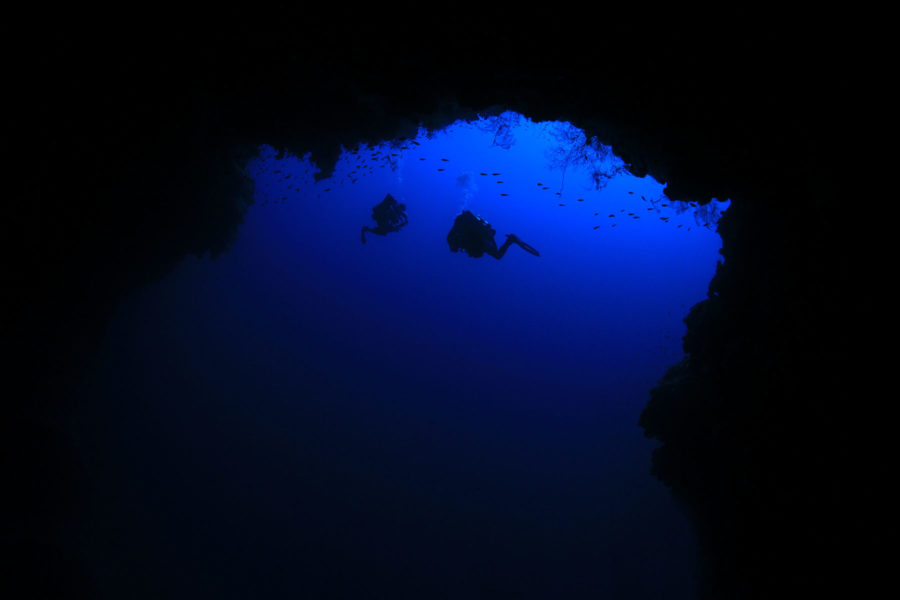
The Blue Hole is a Dahabian icon.
Divers have long been attracted to its sparkling display of sunlit corals, crystalline visibility, and a seemingly infinite depth. Coupled with ease of accessibility – a few steps is all that’s required to reach its edge – it is no wonder the Blue Hole has become a bucket list site for dive log stamp collectors.
It also holds mass appeal. Whether you’re an advanced recreational diver, deep diver, freediver, non-deco CCR diver, or if you’re Tec/CCR certified all the way up to 100+ meters – there’s a dive profile for you. A reef ecosystem starting as shallow as 1m ensures snorkelers don’t get left out either.
The Blue Hole offers so much more than just an infamous Arch (if you know, you know) and a notorious reputation (more on that later). That’s why we took a deep dive (sorry for a pun devoid of creativity but I haven’t had my morning coffee yet) and put together the ultimate guide on everything you need to know about diving the Blue Hole in Dahab – including a comprehensive list of dive profiles and options you’ve probably never heard of.
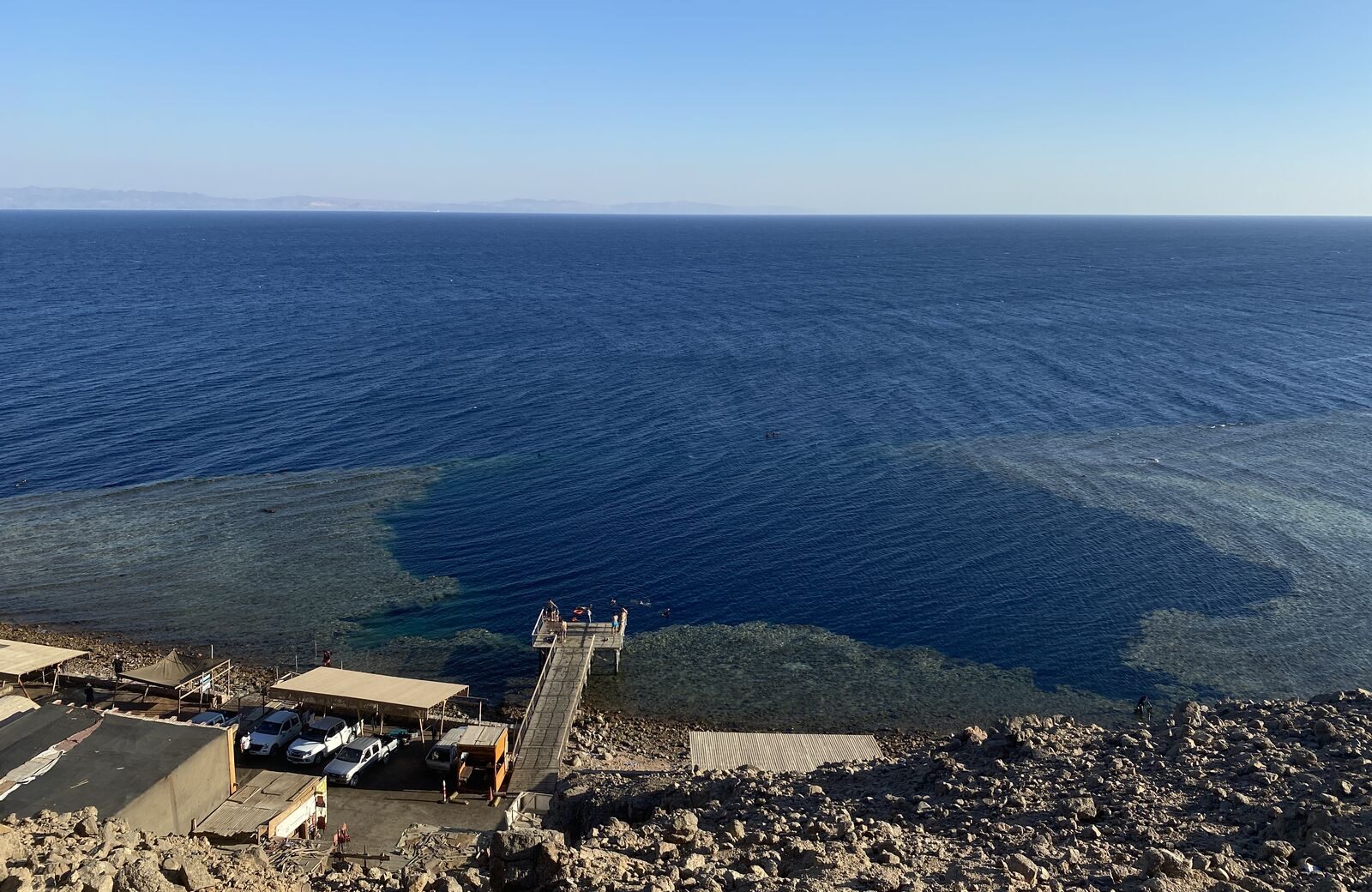 The Blue Hole, Briefly
The Blue Hole, Briefly
For those new to Dahab, we’ll (fin)kick off with the basics.
What Exactly is Dahab’s Blue Hole?
It’s a literal geological phenom; crafted by eroding limestone that collapsed eons ago to formed an underwater sinkhole bottoming out at around 120m*. It’s marked by a coral-fringed circular formation approximately 25m in diameter.
*fun fact: the bottom of the Blue Hole is not flat, so the ultimate depth depends on where exactly you are inside the Blue Hole!
Where is it Located?
The Blue Hole is in South Sinai, Egypt – about a 2oish minute taxi ride north of Dahab’s town center. Its entrance lies directly on the shore of the Gulf of Aqaba.
Best Time to Visit the Blue Hole
The Blue Hole can be visited year round. We recommend the shoulder seasons (March – May / September – November) as both water and outside temps are comfortable and the crowds are less.
Opening Hours
The Blue Hole opens at 8am and all visitors must be out of the water and leave the area before 4pm.
National Park Fees
There is a 10 USD National Park fee to enter the Blue Hole area.
Weather Conditions at the Blue Hole
An outer reef wall shelters the hole itself; essentially turning it into a saltwater swimming pool where currents and waves tend to range from mild to non-existent. The visibility doesn’t suck either.
What Marine Life Can You See at the Blue Hole?
Aside from the interesting reef structure, you’ll find all the usual marine life you’d expect to find on reefs in the Red Sea. Boxer shrimp, nudibranchs, turtles, and octopus are among the creatures you might find. There is a variety of fish on this dive too, from the clouds of orange and purple anthias to colorful schools of parrotfish.
There’s also always a chance you might see something larger out in the blue. Whale sharks, dolphins, eagle rays, and tuna have all been seen on the outer reef, so you never know your luck. Only a couple weeks ago, one of our Tec staff spotted a Mola Mola at 103m!
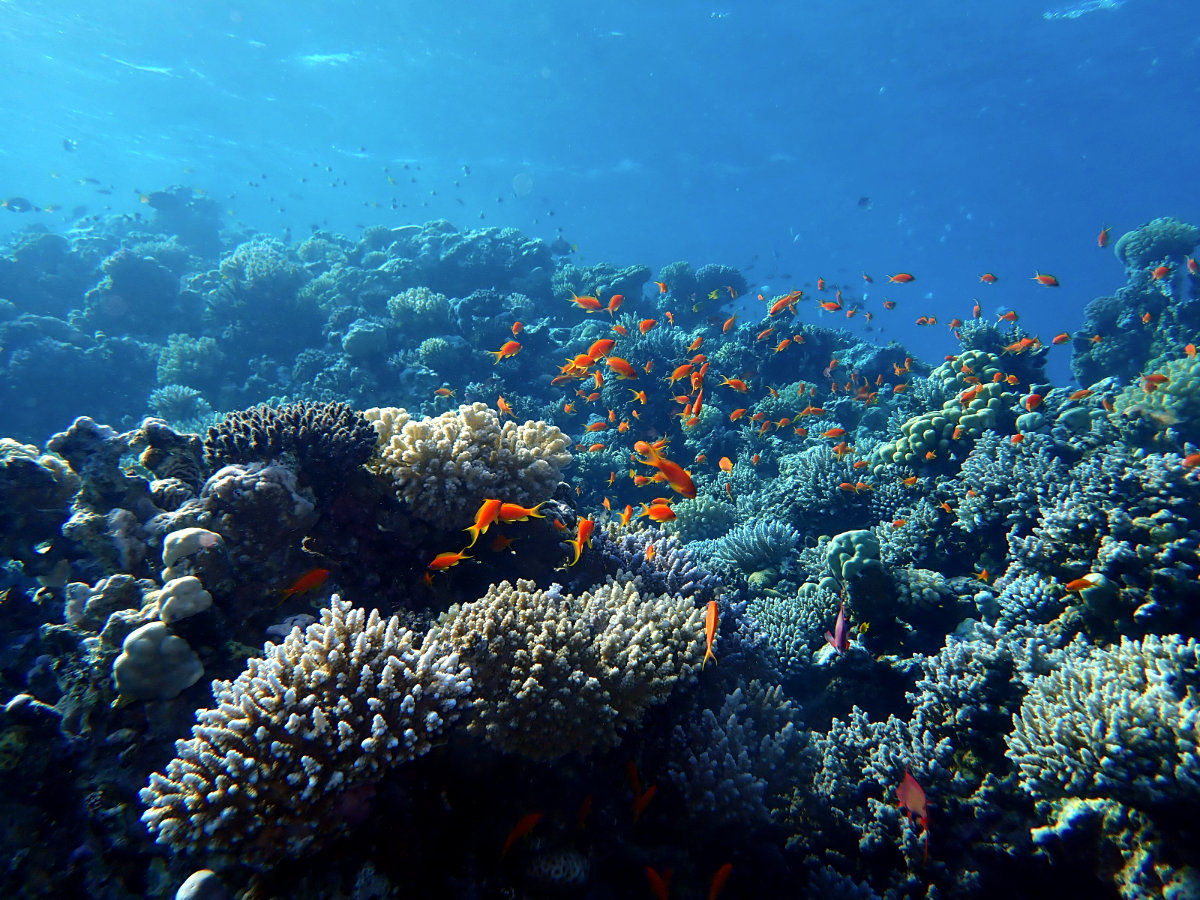 Recreational Diving at the Blue Hole in Dahab
Recreational Diving at the Blue Hole in Dahab
We’ll be honest – the Blue Hole is kinda small.
If you were to spend your entire dive circumnavigating it, your dive time would likely be around 15 minutes. While you can always stretch this or circle it multiple times, aside from marveling at the seemingly bottomless depths and watching the free divers descend from their buoys and disappear into the blue, there’s not that much to see in the interior for recreational divers.
That’s why divers spend the majority of their dives outside the Blue Hole, exploring the coral-rich wall stretching either towards the North or the South.
We’ve outlined our favorite ways to dive the Blue Hole below.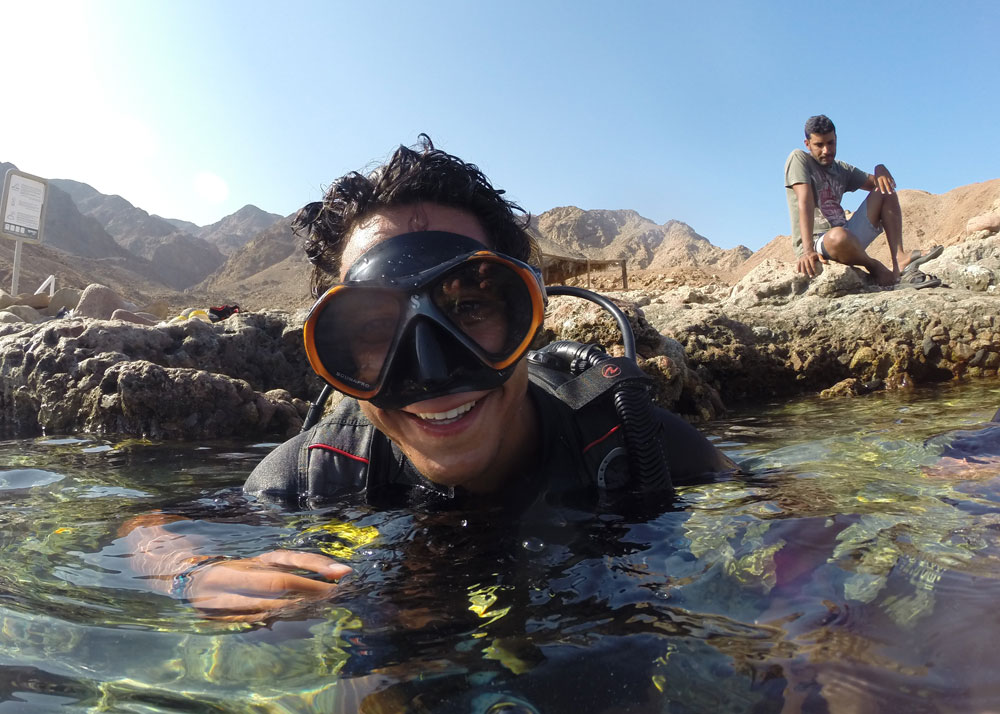
The Bells to Blue Hole Drift Dive
This is the most common route and was recently featured in our list of Dahab’s best drift dives.
Divers enter from the shore further along the coast, just north of the Blue Hole, at a crack in the reef known as the Bells. The Bells is a natural chute which divers descend down; their tanks often clanging against the rocks and mimicking the sound of church bells. Hence where the Bells gets its name.
Divers emerge out to the reef wall at a depth of 28m and simply follow the reef to the south, ascending along the way before crossing a coral saddle at 7m and entering the Blue Hole where they complete their safety stop before exiting.
If you’re a visual person, series regular Bente compiled a highlight reel of this dive profile on Instagram for your viewing pleasure.
Prerequisites
- minimum of Advanced Open Water (30m)
- this site can be dived as part of your Advanced Open Water course or as an Adventure Dive if you are short on time and can’t complete the full Advanced course
- a check-dive on our House Reef is required prior to dives at the Blue Hole
Alternate Ways to Enjoy this Dive Profile
- Deep certified divers can explore at 40m
- we recommend extending your bottom time with Nitrox which is included in all our dive packages. The Nitrox cert is one of the most useful certifications for divers
- recreational divers on double/SM tanks or on CCR can sign up for our extended no-deco dives and spend up to 120 minutes seeing everything this site has to offer
- be the first (and likely only ones) there by requesting Bells to Blue Hole as an early morning dive
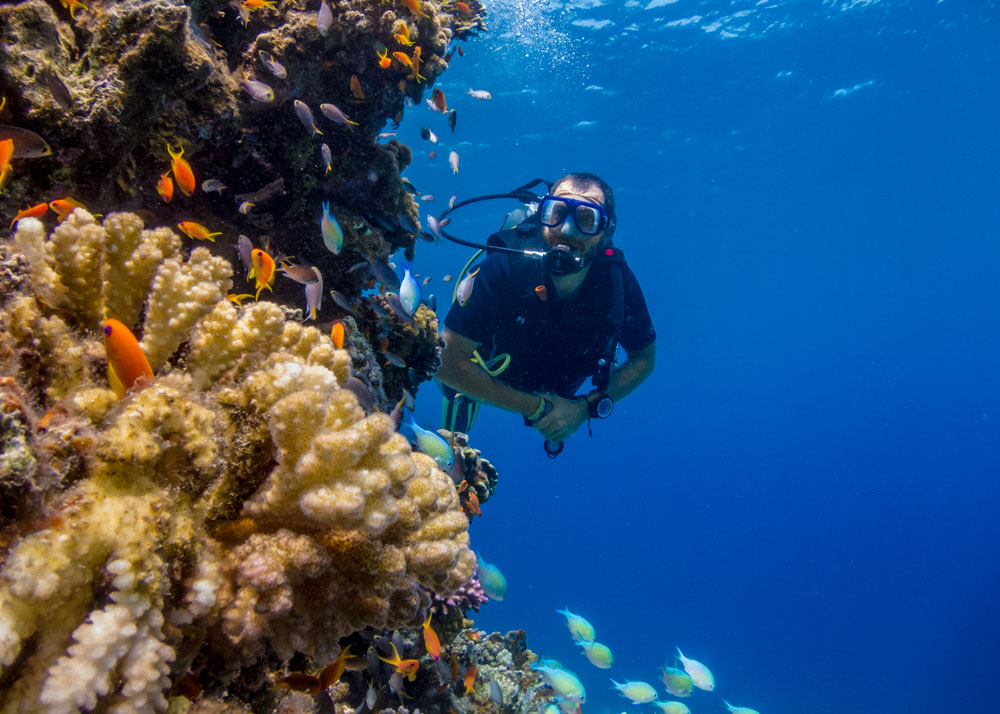 Blue Hole – the Southern Wall
Blue Hole – the Southern Wall
The Bells to Blue Hole dive covers the best sections of the Northern wall. Now it’s time to head south.
This profile has divers beginning their descent in the Blue Hole itself and meandering along the interior wall before crossing over the 7m coral saddle. Divers then hang a right, exploring the reefs of the southern wall until the agreed turning point, at which point they head back over the saddle for their safety stop and exit the same way they came in.
Prerequisites
- minimum of Advanced Open Water (30m)
- a check-dive on our House Reef is required prior to dives at the Blue Hole
Alternate Ways to Enjoy this Dive Profile
- Deep certified divers can explore at 40m
- recreational divers on double/SM tanks or on CCR can sign up for our extended no-deco dives and spend up to 120 minutes seeing everything this site has to offer
Insider’s Tip: we recommend spending 1 full day at the Blue Hole, starting off with the Bells to Blue Hole dive and doing the Southern wall as the second dive. When done like this, divers get to leisurely enjoy the area and relax during their surface intervals at a local cafe.
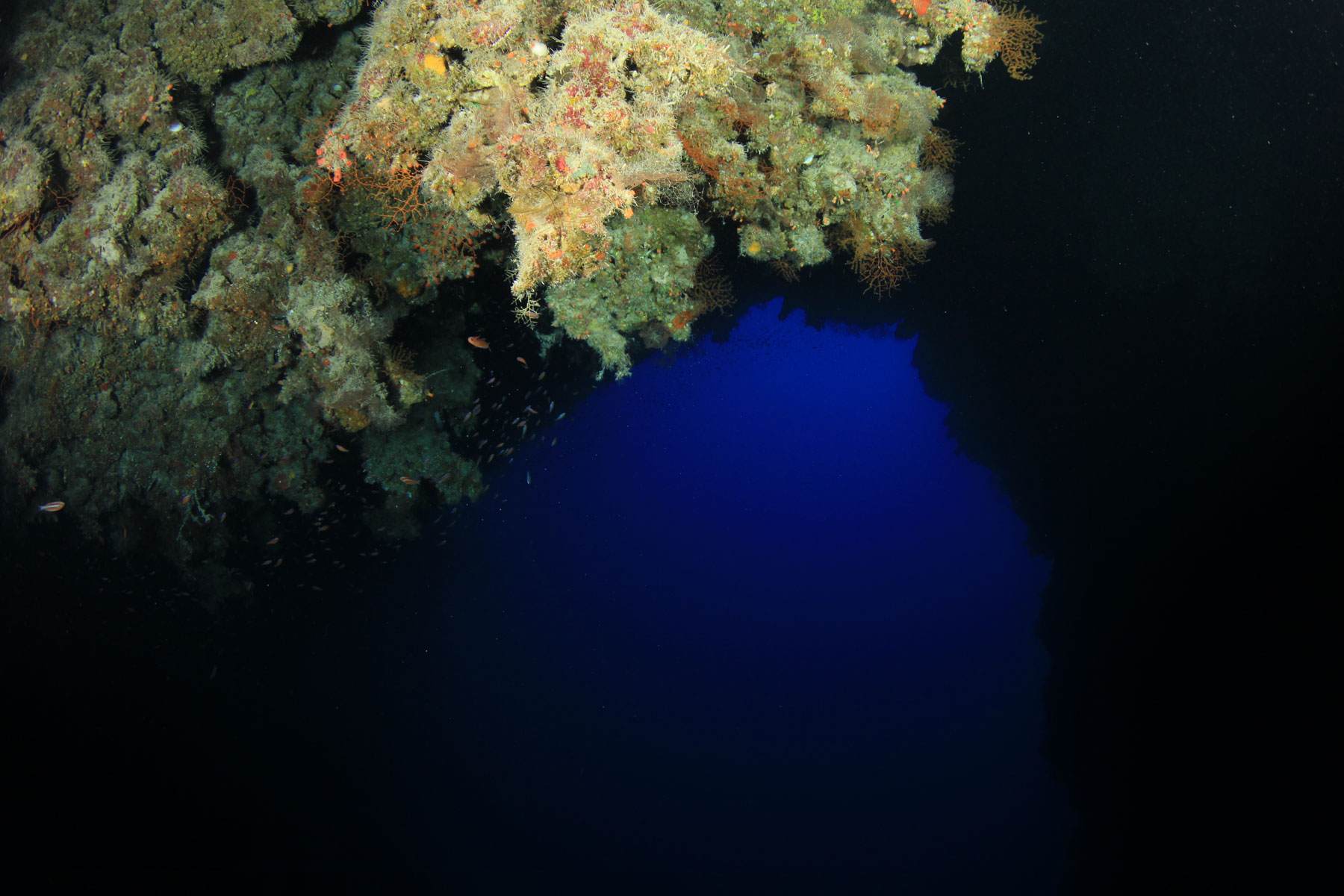 Technical Diving at Dahab’s Blue Hole
Technical Diving at Dahab’s Blue Hole
The technical diving scene at the Blue Hole is, quite frankly, poppin’.
Not many areas in the world host depths of this magnitude that are this easily accessible. Add in all the factors we already mentioned such as excellent visibility and calm conditions, it’s no wonder the Blue Hole is a Tec diver’s dream. There are just SO. MANY. OPTIONS.
I found myself (the mysterious voice behind the Scuba Seekers blog) overwhelmed with which Tec profiles to highlight. Even enlisting the help of Tec Instructors Sameh Sokar and Alfred Harvey only made me more confused – asking them to choose a favorite profile was like asking them to choose a favorite child.
Anyway, this little tangent basically serves as a way to say this Blue Hole Tec list is by no means exhaustive – you could spend over a week (in fact, we recommend it) doing Blue Hole Tec dives and still won’t have seen all there is to see. Each dive is new and the below profiles serve as a starting point for exploration – not an end point.
The Infamous Arch – The Lore
You knew we had to start here.
And if you had no idea we had to start here, you’ve likely heard of this site whether you realize it or not – for the Arch is what feeds the Blue Hole’s notorious reputation. Unfortunately, Dahab’s Blue Hole most often appears in the media when it’s associated with a tragedy, such as a scuba diving or freediving fatality.
There’s a rumor it’s claimed over 150 lives but what it fails to state is the overwhelming majority of these deaths were a result of divers taking silly risks, such as attempting to cross the Arch with only a single cylinder, or diving too deep with incorrect gas mixes.
As long as you are properly trained, plan the dive correctly and within your limitations, diving the Arch is no more dangerous than similar Technical dives around the world.
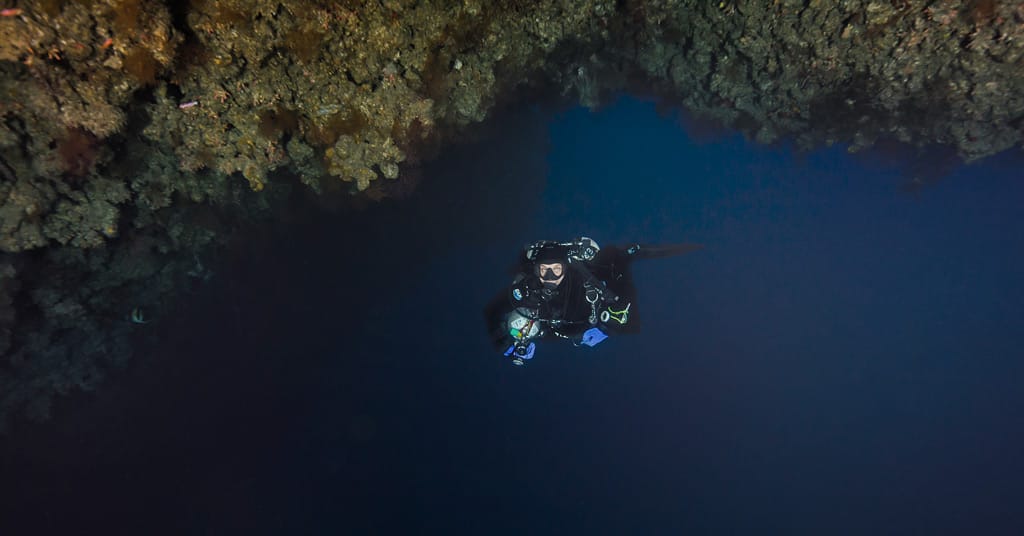 The Infamous Blue Hole Arch – The Dive
The Infamous Blue Hole Arch – The Dive
The Arch is an opening starting in the underbelly of the Blue Hole. Tec divers start their descent in the Blue Hole itself, enjoying a visually bottomless view dappled with shifting light. Crossing the threshold of the Arch at approximately 56m, divers venture on a 27 meter journey through an underwater tunnel before being dramatically dumped into the blue; the reef wall behind them dropping all the way to the seabed.
The traditional profile sees diver ascending back up along this wall, doing their deco stops along the way and crossing back over the top of the Blue Hole before exiting the same way they entered.
Prerequisites
- minimum of TDI Extended Range (or equivalent) or TDI CCR Mixed Gas (or equivalent)
- a Tec check-dive on our House Reef is required prior to all dives at the Blue Hole
The In-Betweens (60 – 90m)
The Arch is often used as a literal gateway for the majority of deeper Tec dives at the Blue Hole.
For Advanced Mixed Gas divers, there are profile options at the Blue Hole whether you prefer to explore at 65m, 75m, 90m or more. Many of which involve crossing the Arch and exploring deeper along the seabed on the other side – either to the Northern or Southern plateaus.
If you plan on doing deeper Tec dives at Dahab’s Blue Hole we recommend spending a couple days doing warmup deco-dives and getting to know your guide who can help tailor the Blue Hole profiles to suit your interests.
Gorilla’s Head Tec Dive (90m+)
We couldn’t end this Blue Hole guide without one more more highlight – an easy favorite among our Tec team.
Gorilla’s Head is a dramatic outcrop jutting from one of the many deep seabed plateaus at around 90m. It gets its name because its shape is reminiscent of a Gorilla’s Head (divers are a creative bunch, I know).
Like many deep profiles, this dive can be customized depending on the diver. Divers can reach Gorilla’s Head via the Arch (though this route is better done with DPV’s due to the distance) or divers can enter inside the Blue Hole and crossover the 7m saddle before descending immediately down to the plateau toward Gorilla’s Head (a 2-hourish dive depending on bottom time).
Prerequisites
- minimum of Advanced Trimix level – either OC or CCR
- a Tec check-dive on our House Reef is required prior to all dives at the Blue Hole
- for deeper dives, it’s best to book a few diving days prior to build up depth
In Conclusion
The Blue Hole is, quite rightly, one of the most famous dive sites in Dahab. We hope the above 1964 word guide to diving Dahab’s Blue Hole provides you with a thorough overview of everything the Blue Hole has to offer.
If you have any questions or want to book your Blue Hole dives with one of our experienced guides, drop us an email at info@scubaseekers.com.
